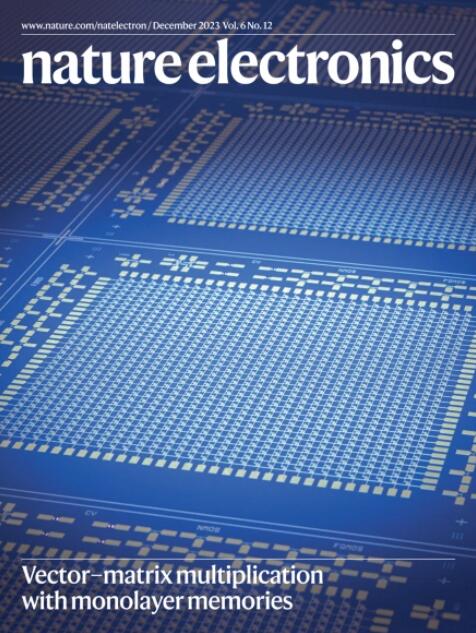一堆用于三维类器官界面的硅网格
IF 40.9
1区 工程技术
Q1 ENGINEERING, ELECTRICAL & ELECTRONIC
引用次数: 0
摘要
来自imec和KU Leuven的研究人员通过130纳米互补金属氧化物半导体(CMOS)技术和深度反应蚀刻技术,制造了一个由四个悬浮硅网组成的堆栈,其中包含256个岛电极。采用多路复用和电路复用技术实现不同的工作模式。该MEA的输入参考噪声为9.1±1.5 μVrms (0.3-10 kHz),功耗为11.3 μW /岛。体外培养的心肌细胞实验表明,该系统可以记录电压刺激下的细胞内活动,并跟踪网络的传播。一种有源硅穿孔MEA,用于无缝3D类器官接口,具有低噪声,可扩展的多模态电生理。在Proc 2025 IEEE VLSI技术研讨会&;电路(2025);https://www.vlsisymposium.org/本文章由计算机程序翻译,如有差异,请以英文原文为准。

A stack of silicon meshes for 3D organoid interfacing
求助全文
通过发布文献求助,成功后即可免费获取论文全文。
去求助
来源期刊

Nature Electronics
Engineering-Electrical and Electronic Engineering
CiteScore
47.50
自引率
2.30%
发文量
159
期刊介绍:
Nature Electronics is a comprehensive journal that publishes both fundamental and applied research in the field of electronics. It encompasses a wide range of topics, including the study of new phenomena and devices, the design and construction of electronic circuits, and the practical applications of electronics. In addition, the journal explores the commercial and industrial aspects of electronics research.
The primary focus of Nature Electronics is on the development of technology and its potential impact on society. The journal incorporates the contributions of scientists, engineers, and industry professionals, offering a platform for their research findings. Moreover, Nature Electronics provides insightful commentary, thorough reviews, and analysis of the key issues that shape the field, as well as the technologies that are reshaping society.
Like all journals within the prestigious Nature brand, Nature Electronics upholds the highest standards of quality. It maintains a dedicated team of professional editors and follows a fair and rigorous peer-review process. The journal also ensures impeccable copy-editing and production, enabling swift publication. Additionally, Nature Electronics prides itself on its editorial independence, ensuring unbiased and impartial reporting.
In summary, Nature Electronics is a leading journal that publishes cutting-edge research in electronics. With its multidisciplinary approach and commitment to excellence, the journal serves as a valuable resource for scientists, engineers, and industry professionals seeking to stay at the forefront of advancements in the field.
 求助内容:
求助内容: 应助结果提醒方式:
应助结果提醒方式:


